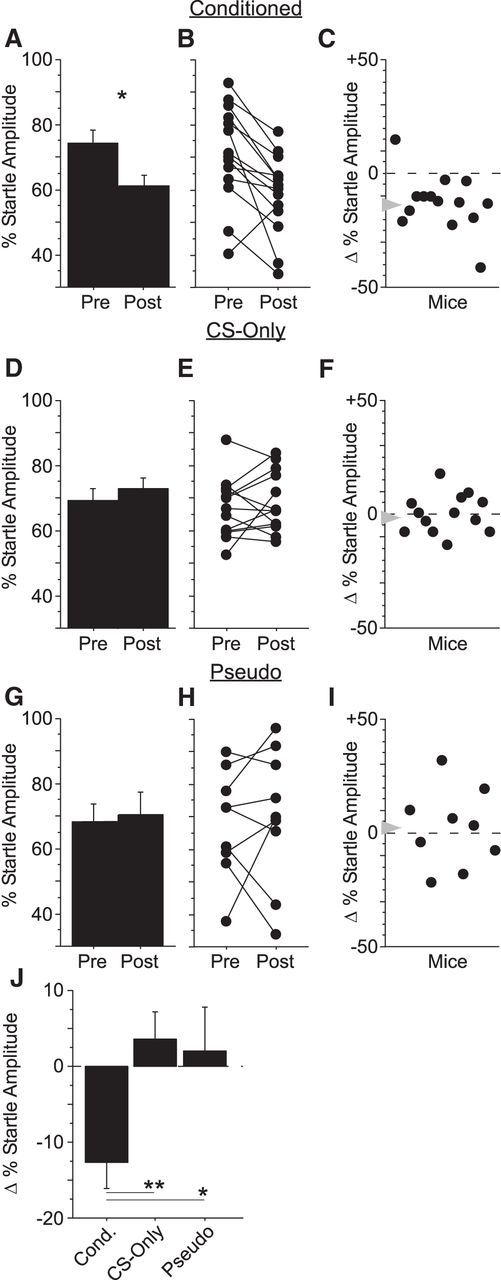Figure 2.

Gap-shock pairing enhances gap detection. We measured gap detection before conditioning (Pre) and again 6 h after conditioning (Post) in three separate groups of mice. A, One group of mice (Conditioned; n = 14) was presented with paired presentations of the 10 ms gap (CS) and a periorbital shock (US). These mice showed a significant increase in gap detection after conditioning. B, This effect was highly consistent across animals. C, Net change in percentage startle amplitude after conditioning for each animal; gray arrow indicates the mean. D–F, A second group of mice (CS-Only; n = 13) was presented with the gap-CS only (no shocks were presented). There was no change in gap detection after conditioning. G–I, A third group of mice (Pseudo; n = 9) received explicitly unpaired presentations of the gap-CS and shock-US. No change in mean gap detection was observed in Pseudoconditioned mice (G), but variability between mice (H, I) was significantly greater than that seen in CS-Only mice (C). J, Mean change in startle amplitude after conditioning was significantly greater for Conditioned mice compared with CS-Only or Pseudo mice. *p < 0.05; **p < 0.01.
